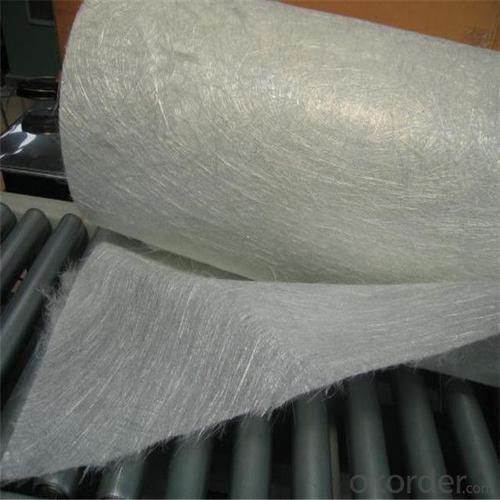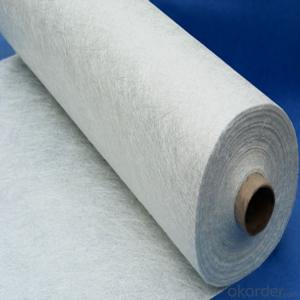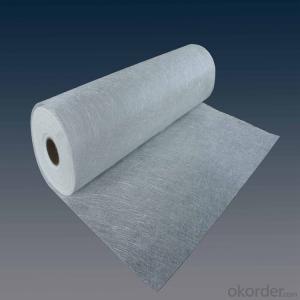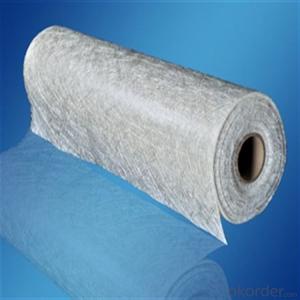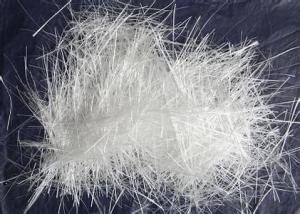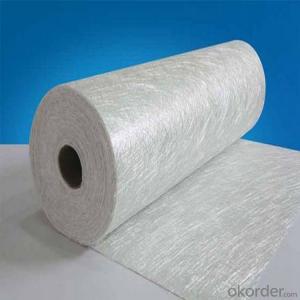Ctg Brand Fiberglass Chop Strand Mat Emulsion Binder Chopped Sand Mat in China
- Loading Port:
- Tianjin
- Payment Terms:
- TT OR LC
- Min Order Qty:
- 100 m.t.
- Supply Capability:
- 20000 m.t./month
OKorder Service Pledge
OKorder Financial Service
You Might Also Like
Quick Details
| Technique: | Chopped Strand Fiberglass Mat (CSM) | Dimensions: | according to customer's request | Mat Type: | Stitch Bonding Chop Mat |
| Fiberglass Type: | E-Glass | Softness: | middle | Place of Origin: | Jiangxi, China (Mainland) |
| Brand Name: | cnbm | Model Number: | CSMEP100,CSMEP120,CSMEP200,etc | Product: | Cooling Tower Building Glass Fiber Fiberglass Chopped Strand Mat(csm) |
| Color: | White | Width: | 1040mm,1250mm,ect. | Area weight: | 225-900g/m2 |
| Application: | filament winding,panpel,ect |
Packaging & Delivery
| Packaging Details: | Each roll in one polybag then to an export carton. |
| Delivery Detail: | Within 18 days after confirm order |
Fiberglass Chopped strand mat
Powder Strand Mats Product Features:
1) Uniform density ensures consistent fiberglass content and mechanical properties of the composites products.
2)Uniform powder distribution ensures good mat integrity, little loose fibers and small roll diameter.
3) Excellent flexibility ensures good mold ability with no spring back at sharp angles.
4)Fast and consistent wet-out speed in resins and rapid air lease reduce resin consumption and production cost and enhances productivity and mechanical properties of the end products.
5)The composite products have high dry and wet tensile strength and good transparency.
Picture

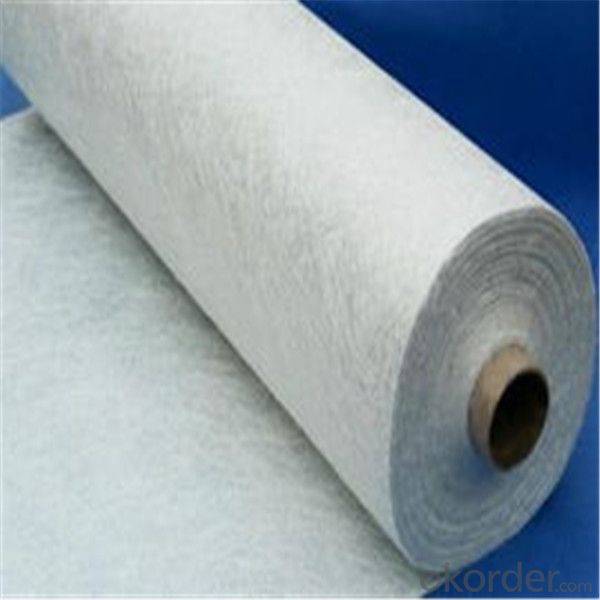



- Q: What are the different packaging options for fiberglass chopped strand?
- Fiberglass chopped strand offers various packaging options to cater to the specific demands and preferences of customers. 1. Bags: Fiberglass chopped strand can be conveniently packaged in bags of different sizes, ranging from small kilograms to large several hundred kilograms. These bags are usually constructed from durable materials like plastic or woven polypropylene, ensuring the product's integrity during storage and transportation. 2. Bulk packaging: Customers requiring substantial quantities of fiberglass chopped strand can avail themselves of bulk packaging options. This may include bulk bags or FIBC (Flexible Intermediate Bulk Container), capable of accommodating several tons of chopped strand. This packaging type is commonly utilized in industrial settings where large volumes of material are necessary. 3. Pallets: Pallets serve as another packaging solution for fiberglass chopped strand. In this scenario, the chopped strand is either bagged or wrapped with protective films and placed on wooden or plastic pallets. This alternative facilitates the easy handling, storage, and transportation of the material, particularly for customers requiring frequent or regular deliveries. 4. Custom packaging: Tailored packaging options can be arranged based on the specific requirements of customers. This may involve specialized packaging materials, labeling, or additional protective measures to ensure the quality and safety of the fiberglass chopped strand during transit and storage. Overall, the packaging options for fiberglass chopped strand are diverse, adapting to the quantity, application, and individual needs of customers. The primary objective is to deliver a secure, convenient, and reliable solution for the handling and transportation of the product to its intended destination.
- Q: Is fiberglass chopped strand suitable for applications requiring electrical conductivity?
- Fiberglass chopped strand, unfortunately, is unsuitable for applications where electrical conductivity is needed. Fiberglass, being an insulating material, does not possess the ability to conduct electricity. In cases where electrical conductivity is necessary, it is advisable to explore alternative materials like metals or conductive polymers.
- Q: What are the different forms of fiberglass chopped strand available?
- There are several different forms of fiberglass chopped strand available on the market. These include: 1. Chopped strand mat (CSM): This is a non-woven fabric made from randomly distributed chopped strands held together with a binder. CSM is commonly used in hand lay-up processes and is ideal for flat or slightly curved surfaces. 2. Chopped strand continuous roving (CSCR): This form consists of continuous strands of fiberglass that are chopped into shorter lengths. CSCR is often used in filament winding, pultrusion, and compression molding processes, providing excellent mechanical properties and high strength. 3. Chopped strand mat with a polyester veil (CSM-PV): This type of chopped strand mat has an additional layer of polyester veil on one side. It offers improved surface finish and reduced print-through compared to regular CSM, making it suitable for applications requiring a smoother appearance. 4. Chopped strand for thermoplastics: Fiberglass chopped strand specifically designed for thermoplastic applications, such as injection molding or extrusion processes. These strands are typically coated with a sizing that enhances adhesion with the thermoplastic matrix. 5. Chopped strand for thermosets: Fiberglass chopped strand formulated for use in thermosetting resin systems, such as polyester, epoxy, or vinyl ester. These strands have a sizing agent that promotes good wet-out and adhesion to the resin, ensuring proper reinforcement. 6. Chopped strand for concrete reinforcement: Specialized fiberglass chopped strands used to reinforce concrete structures. These strands are typically alkali-resistant to withstand the alkaline environment of concrete and improve the durability and strength of the composite material. 7. Chopped strand for insulation: Fiberglass chopped strands that are specifically designed for thermal and acoustic insulation applications. These strands are often processed into insulation batts, blankets, or loose-fill products, providing excellent heat and sound insulation properties. It's important to consider the specific requirements of your application and consult with a fiberglass supplier or manufacturer to determine the most suitable form of chopped strand for your needs.
- Q: What are the disposal options for fiberglass chopped strand waste?
- There are several disposal options available for fiberglass chopped strand waste. One option is to recycle the waste material. Fiberglass can be recycled by grinding it down and using it as filler material in other products such as concrete or asphalt. This not only helps to reduce the amount of waste going to landfills but also allows for the reuse of the fiberglass. Another disposal option is to incinerate the chopped strand waste. Incineration can be a viable option for disposing of fiberglass waste as it can generate energy from the combustion process. However, it is important to note that incineration should only be done in facilities equipped with proper air pollution control systems to minimize the release of harmful emissions. If recycling or incineration is not feasible, landfill disposal is another option. However, this should be considered as a last resort due to the potential environmental impact. When disposing of fiberglass chopped strand waste in a landfill, it is important to ensure that the waste is properly contained and managed to prevent any potential leaching of hazardous materials. In conclusion, the disposal options for fiberglass chopped strand waste include recycling, incineration, and landfill disposal. It is recommended to prioritize recycling and incineration where possible to minimize the environmental impact of this waste material.
- Q: Can fiberglass chopped strand be used in the production of insulation panels?
- Yes, fiberglass chopped strand can be used in the production of insulation panels. Fiberglass chopped strand is commonly used as a reinforcement material in various composite applications, including insulation panels. It provides strength, durability, and thermal insulation properties to the panels. The chopped strands are mixed with a binder material and then formed into panels using various manufacturing techniques such as compression molding or pultrusion. The resulting insulation panels offer excellent thermal insulation properties, low thermal conductivity, and high resistance to heat transfer, making them suitable for a wide range of applications in the construction and industrial sectors.
- Q: Is fiberglass chopped strand suitable for the production of sports equipment?
- Yes, fiberglass chopped strand is suitable for the production of sports equipment. It offers excellent strength and durability, making it ideal for various applications in sports equipment manufacturing.
- Q: How does the moisture absorption of the chopped strand affect its performance?
- The moisture absorption of chopped strand can significantly affect its performance. Chopped strand, which is typically made of glass or carbon fibers, has a tendency to absorb moisture when exposed to humid or wet environments. This moisture absorption can lead to several negative effects on its performance. Firstly, moisture can weaken the structural integrity of the chopped strand. When the fibers absorb water, they can lose some of their strength and stiffness, which can compromise the overall performance of the material. This can be a major concern in applications where high strength and durability are required, such as in composite materials used in aerospace or automotive industries. Secondly, moisture absorption can lead to dimensional instability. When the fibers absorb water, they can expand, causing the chopped strand to change in size and shape. This can be problematic in applications where precise dimensions are crucial, as it can lead to fitment issues or distortion of the final product. Furthermore, moisture absorption can also lead to the development of mold or fungi. Moisture provides an ideal breeding ground for these organisms, which can degrade the fibers and further compromise the performance of the chopped strand. This can be detrimental in applications where the material is exposed to high humidity or moisture for prolonged periods, such as in marine or outdoor environments. In conclusion, the moisture absorption of chopped strand can have a significant impact on its performance. It can weaken the structural integrity, cause dimensional instability, and promote the growth of mold or fungi. Therefore, it is crucial to consider the moisture absorption characteristics of chopped strand when selecting and using it in various applications.
- Q: What are the typical electrical insulation properties of chopped strand composites?
- The typical electrical insulation properties of chopped strand composites include high dielectric strength, low electrical conductivity, and excellent resistance to electrical current flow. These properties make chopped strand composites suitable for applications where insulation is required to prevent electrical leakage or short circuits.
- Q: Is fiberglass chopped strand suitable for wind turbine blades?
- Indeed, wind turbine blades can indeed be made of fiberglass chopped strand. This material is highly favored in the production of wind turbine blades due to its remarkable properties such as lightweight, exceptional strength, and durability. Chopped strand fiberglass, which comprises of randomly oriented small fibers held together by a binder, allows for effortless molding and manufacturing into intricate shapes, making it an excellent choice for the production of wind turbine blades. The fibers provide remarkable stiffness and strength, enabling the blades to efficiently harness wind energy and endure the strains and pressures encountered during operation. Furthermore, fiberglass possesses corrosion-resistant qualities, reducing the need for maintenance and extending the lifespan of the blades. All in all, fiberglass chopped strand is a fitting and extensively utilized material in the fabrication of wind turbine blades.
- Q: Can fiberglass chopped strand be used in water slides?
- Yes, fiberglass chopped strand can be used in water slides. Fiberglass is a popular material choice for water slides due to its strength, durability, and resistance to water damage. Chopped strand refers to small strands of fiberglass that are cut into shorter lengths, making it easier to handle and incorporate into the manufacturing process. These chopped strands can be mixed with resin and other materials to create a composite that is then molded into the desired shape of the water slide. The resulting fiberglass composite is able to withstand the constant exposure to water, provide structural integrity, and ensure a smooth and enjoyable ride for water slide enthusiasts.
Send your message to us
Ctg Brand Fiberglass Chop Strand Mat Emulsion Binder Chopped Sand Mat in China
- Loading Port:
- Tianjin
- Payment Terms:
- TT OR LC
- Min Order Qty:
- 100 m.t.
- Supply Capability:
- 20000 m.t./month
OKorder Service Pledge
OKorder Financial Service
Similar products
Hot products
Hot Searches
Related keywords










